Oppo has been in the Australian market for 3 years now, bringing their range of affordable high-quality phones to an increasingly-receptive Australian public. While their older N and Find series seems to be taking a rest, the company’s devices have gone from strength to strength with its wallet-friendly F series and the design-oriented R series seems to be where the main focus of their innovations lie.
The original R5 brought with it a focus on a slim, svelte design but brought with it a trade-off that made us uncomfortable at the time – the phone was too thin to house a 3.5mm headphone jack. The pendulum has swung the other way on the phones since, with the R7 and R7 Plus both bringing back the now-controversial plug and instead following the R5’s design focus without the tradeoffs.
The R9s takes aim right at the heart of the midrange market, with a price point just shy of $600 – half the price of the premier models on offer from other manufacturers. For your money you’re getting one of the more powerful midrange Qualcomm processors paired with a decent chunk of RAM to aid performance. The specs of the device have helped Oppo in their quest for market share in China, where its seen strong shipments.
Following the trend of many manufacturers, Oppo’s range often features a standard edition and a “plus size” phone that bears a slight spec bump for its price. For an extra $100, Oppo’s R9s Plus features a more powerful processor, yet more RAM, a better camera, bigger battery and bigger screen. It’s hard to argue against that for value.

Both phones ship with a basic set of earphones in the box, an instruction manual you’ll probably not look at, and perhaps the best inclusion of all – a thin, clear bumper case. They also ship with a basic screen protector already applied, so you can use your phone and be confident you’re protected from occasional bumps and scratches right out of the box. However, we found that the factory-installed screen protector scratches rather easily. If you occasionally drop your phone or keep it in a pocket with keys an after-market glass screen protector and a more robust drop-proof case would be a wise investment.
| OPPO R9s Plus | OPPO R9S | Release date | March 2017 | January 2017 | Screen size | 6.0-inch | 5.5-inch | Screen technology | IPS LCD | AMOLED | Resolution | 1,920 x 1,080 | 1,920 x 1,080 | PPI | 367 | 400 | Rear camera | 16MP | 16MP | Front camera | 16MP | 16MP | Chipset | Snapdragon 653 | Snapdragon 625 | Core config | 4x1.95 GHz Cortex-A72 & 4x1.44 GHz Cortex-A53 | 8 x 2.0 GHz | Ram | 6GB | 4 GB | Storage | 64GB | 64 GB | MicroSD | Yes, up to 256GB | Yes, up to 128GB | Battery | 4,000 mAh | 3,010 mAh | Battery removable | — | — | Connector | MicroUSB | MicroUSB | Headphone Port | Yes | Yes | Headphone Location | Bottom | Bottom | Speaker Configuration | — | Bottom | NFC | — | — | Android OS | Android 6.0 | Android 6.0 | Vendor skin | ColorOS 3.0 | ColorOS 3.0 | Dimensions | 163.6 x 80.8 x 7.35 | 153 x 74.3 x 6.58 mm | Weight | 185g | 145g | Colours |
|
|
|---|
Hardware
Oppo’s R-series design focus is absolutely evident here, but unfortunately its hard to class both phones as anything other than “iPhone-inspired” with their metal frames, rounded edges and choice of colours. The all-metal rear of the phone sees the antenna lines run across in two sets, a familiar-placed camera and little else. The front’s top/bottom bezels and the placement of the fingerprint sensor below the screen (mercifully, it’s at least rectangular instead of round) also evoke that familiarity. It does give the phones a high quality feel, but we’d still like to see something a little more original from Oppo’s hardware designers.
We’ve been big fans of the Oppo “plus” models for a while because they hide a huge battery under the screen, and the R9s Plus is no different with its 4,000 mAh battery, but it’s not for everyone and consumers looking for different things in their phones might come away from either model finding something missing.
There are big and beautiful 1080p screens with narrow side bezels on each phone, with a pleasing screen-to-body ratio hovering around 75%. The R9s has an amazingly bright AMOLED display (you can probably use it at half/three-quarter brightness in all but the brightest of sunlight), while the R9s Plus has a slightly dimmer IPS LCD.
Oppo says that the Corning Gorilla Glass 5 screen protection on both phones is claimed to give you about an 80% chance of coming out of a shoulder-height drop with an intact screen. Neerav and Jason are both pretty tall guys, so this particular claim did go untested.
If you’re a big person with big hands, you’ll probably be able to use either phone one-handed, but the R9s Plus is a little more of a stretch. For everyone else, two-hand usage is a must.
Finally, the combined fingerprint sensor / home button below the screen is one of the best we’ve seen. You can unlock the device from screen-off with the lightest of touches at any angle. You can also register several fingers and both thumbs so you have a few options for picking up your phone in either hand, or unlocking it on the tabletop or in a dock.
What’s inside
Oppo’s become well-known for cramming high quality components into value-priced phones, and these phones are no different.
While they’re both powered by Qualcomm’s 6xx series processors, the Snapdragon 653 in the R9s Plus does best the slightly older 625 in the standard R9s. Phones running the more expensive 8xx series processors do have an advantage of higher speed and better graphics capability, but the 6xx series has bridged the gap on “good enough” specs admirably in recent years and for day-to-day usage you’re unlikely to notice that these phones aren’t running top-spec processors.
Planning on using memory hungry applications? The R9s Plus has 6GB of RAM which can easily deal with that. The standard R9s is a little less powerful in this regard again with 4GB of RAM, but that’s easily in lockstep with the premium phones on offer at higher price points over the last couple of years. It lets you multitask efficiently, with apps staying in the background longer – if the OS allows them to do so.
Love to take lots of photos and cache Google play music on your phone? Both phones bring you 64GB of internal storage and if you actually run near that storage limit, you can access up to 256GB extra if you insert a microSD card.
The extra space behind the screen in the R9s Plus affords a 4,000 mAh battery inside the body of the phone, while the R9s brings a smaller 3,010 mAh. The Plus is more likely to make it through the day, even for power users, and possibly even two days if you’re a light user. The power-sipping 6xx series processors also serve to ensure the R9s puts in a decent showing, but if you’re particularly heavy user or a gamer you’ll probably be reaching for the power cable in the afternoon.
When you do need to recharge, Oppo’s VOOC rapid charging technology tops up the battery really quickly, as long as you use one of their chargers and cables. If you don’t want to carry that charger around with you, a standard 2.1A Micro USB charger will still top it up at an admirable rate.
There are two notable omissions that we’d like to see movement on from Oppo’s next series of devices.
Firstly, it’s time to move on from Micro USB. In a world where even Nintendo has embraced USB-C for charging their consoles and the port is even starting to show up at the super-cheap end of the market, it’s a bit of a throwback to still see that right-way-up Micro USB port on the bottom of the R9s and R9s Plus.
Secondly, we need to talk about NFC. While the metal rear on both phones is a common reason for its absence, in a country like Australia that embraces Tap-and-Pay solutions and is in the midst of an Android Pay rollout, its omission sticks out like a sore thumb. Other manufacturers have worked out how to provide NFC functionality without compromising on their premium finish and feel, it’s time Oppo found a way to do this too.
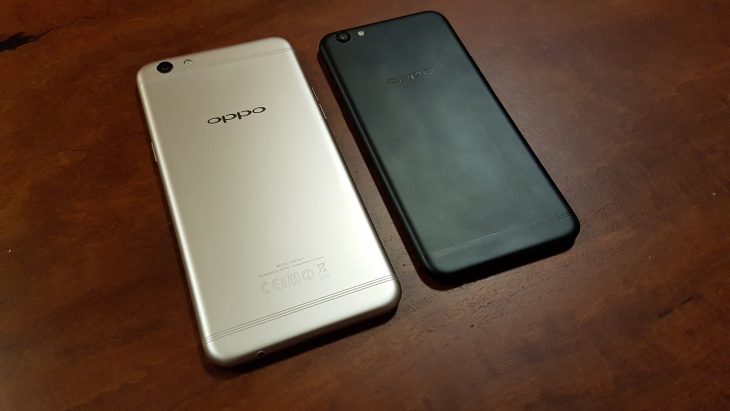
Cameras
We’re going to look at the R9s and R9s Plus cameras individually, because they’re actually some of the components of the phones that differ the most despite similar apertures and 16MP sensors. The good news is, they’re both decent, and likely to serve you well – but one phone has a little something extra.
Both the R9s and R9s Plus cameras use this Dual PDAF (Phase Detection Auto Focus) technology, a next-generation upgrade from standard PDAF. Where the first generation of PDAF had only “a half” pixel for focusing, the Dual PDAF increases by 100% the area of the sensor’s pixel array equipped with the special photodiodes necessary for phase-detection autofocus, allowing lightning-fast focusing even in low light. If you’re not a photographer, this means the cameras don’t need as much light to focus on your intended targets really quickly and reliably, even at night.
While both phones feature a class-leading f/1.7 aperture, meaning they don’t need as much light as other phones to take a photo, the sensor and lack of stablisation on the R9s does leave cause it to come up short in comparison to its bigger brother in some cases.
On the front, you’ll find another 16MP camera paired with a decent f/2.0 aperture – you’ll be able to use these phones for selfies in low-light conditions although you won’t get the ability to control autofocus (a tap on the screen will instead control exposure). Instead of including a dedicated hardware flash at the front, Oppo’s camera software flashes the screen while at maximum brightness if it senses ambient light is too low.
R9s
Oppo’s tagline for the R9s marketing has been “Now, it’s clear”. The phone brought with it a particular focus on camera performance, specifically in low light – and that’s probably the only real battlefield that matters these days.
The R9s’ camera isn’t going to keep pace with the heavyweight low-light performers like the Pixel and recent Samsung phones, but that’s to be expected. This is the midrange, and what we’re looking for here is a camera that justifies the marketing tagline and delivers some quality shots. While it equals some of these more expensive models on aperture, it’s got smaller 1.12µm pixels so it simply can’t catch the same amount of light as some of the other phones with their 1.55µm pixels – which includes the R9s Plus.
Like most phones these days, the R9s can take great photos in broad daylight and well-lit environments, and puts in an above-average performance when the sun goes down but just comes up short. Some of this blame has to go on the lack of image stabilisation features, another omission corrected in the R9s Plus.
You can see this in the low-light samples. While the photos are alright, there’s quite a lot of noise on objects in the frame that you’d hope were captured better – and may have been, if the camera featured OIS. The camera performs better when capturing a wider field of view in low light, where you’re perhaps less likely to sweat the up-close details on objects.
When there’s more light around, the R9s doesn’t disappoint. Scenes are captured vividly and with an impressive level of detail is clear – check out the plants and animal samples below.
One particular aspect of the modern smartphone camera that impresses me is a digital zoom that doesn’t actually ruin the image – within reason. Samsung’s had this since the Galaxy S6, and the Pixel managed a similar trick. With the R9s’ camera, you can pull off a similar trick, and it’s interesting to see just how much detail you can actually capture with it, or use it to crop out slight obstructions that might otherwise ruin your photos. It’s not a feature you’ll want to use all the time, but it’s one you’ll appreciate when you need it.
Oppo’s focus on camera performance in the R9s delivers an impressive camera that belies the midrange handset in which it’s delivered, but you just need to be aware of its limitations and how to best handle it in some environments.
R9s Plus
While Oppo had a particular focus on camera performance in the R9s, they took it a step further with the R9s Plus and asked Sony to develop a custom image sensor for them. This IMX398 1/2.8” sized sensor enables the R9s Plus’ 16MP rear camera’s Optical Image Stabilisation technology, with a 40% larger anti-shake area.
Oppo claims that this lets the “R9s Plus handle more jitter, in addition to more exposure time, promising users extremely clear and captivating night scenes”. The resulting photos are 4,608 x 3,456 pixels and you can also capture 4K video.
The R9s Plus camera impressed on thoughtfully-composes “street art” images.
Close-up food photos were sharp and the colours were quite accurate.
As you would expect from a company that markets its phones for “selfies experts”, the R9s Plus did an excellent job.
Like much of the phone, Oppo’s camera software features a particularly iOS-y feel, with a number of shooting modes (Beauty, Panorama, Time Lapse and Video) accessible with a swipe.
Notably, Oppo’s Panorama mode is very good – providing you move the phone at a steady pace across your field of view.
There’s also a number of neat tricks hidden away deeper behind a mode switch menu, like the ability to shoot as animated GIFs, apply a number of filters, shoot in Oppo’s Ultra HD high resolution mode, and a neat “double exposure” trick that brings a particular look to your photos that we can only assume is all the rage … somewhere. It’s a very specific use case.
The slight background blurriness of the double exposure train photo is because I took it handheld with several seconds between shots. If I’d used a tripod it would have been pin sharp.
Software
We tell a familiar software story with each Oppo phone review. The company’s particular Android distribution, known as Color OS, brings a love-it-or-hate-it skin that seems particularly iOS-inspired and feels out of step with a modern Android phone. The muted grey palette contrasts with Google’s bright, beautiful and animated Material design, and it provides a disjointed experience for users moving between apps from different vendors on the phone.
Color OS 3.0 is much more than a skin. The heavily modified iOs-like changes to Android 6.0 Marshmallow include no app drawer and the user interface is so heavily inspired by Apple that it’s amazing the company hasn’t been sued to change this design.
While deeply frustrating because of it’s Apple clone UI, it must be noted that Color OS 3.0 based on Android 6.0 is extremely stable and that’s been one of Oppo’s goals from the very beginning. There’s been little to no laggy UI or crashes while testing.
The launcher is okay (in that it launches apps), but a bit safe and unadventurous – with no app drawer, the apps you install will pile up to the right of your home screen. You have to make folders to arrange icons and to place widgets you need to pinch in an empty part of the screen.
Totally changed Settings menus will frustrate technically savvy users who prefer the stock Android interface, although it seems the time has come for even Google to start experimenting with this too. There’s a notable lack of search feature in the Settings screen, something that’s become a staple of manufacturers’ Settings customisations.
Frustratingly, the default pull-down on the notification bar is a full screen Quick Settings menu, rather than the more common single expandable row atop your notifications. You need an additional lateral swipe to see your notifications, and it seems Oppo’s still forgotten to change the default text colour in expandable notifications away from black-on-grey.
Some of Oppo’s choices are a bit baffling, and stand out in 2017 where manufacturers should be capable of delivering better designed software. Rather than embracing Chrome, they ship their own Opera-based browser (why ship two browsers?). You could ask a similar question of their bare-bones Photos app, duplicating the functionality provided by Google Photos which is also pre-loaded.
The SMS app doesn’t feature the friendly interface of something like Android Messages, although it does offer a handy grouping option for messages from Unknown Senders, which we’re told is a welcome feature in less-regulated markets where SMS spam is more prevalent. All the standard Google apps are preloaded, but tucked away in a folder where it feels like Oppo’s hoping you won’t notice them and will use their own apps instead … it just begs the question, why?
Is it possible that all the criticism aimed at Color OS is really just power user griping? You can certainly install new apps, change defaults and change the launcher to make the phone your own, but you can’t escape some things. Settings will still be poor, and you’ll still be stuck with the weird notification pull-down. You can paint over the top of it, but you can’t change the basic underlying software.
It feels like Color OS is designed to deliver the phone that Oppo wants to deliver first and foremost, with user customisations an afterthought that may or may not work.
An especially egregious oversight is the fact that you can’t reliably change the default SMS app away from the app provided by Oppo themselves. You can change it, but it’ll change itself back, for “security reasons”. It runs counter to the point of being able to configure this stuff and choose your preferred app in the first place and feels a bit nanny-state.
Also concerning is some of the “security” features that are enabled out-of-the-box, some of which are difficult to turn off or silence.
By default the Phone call settings has “block incoming calls with unknown numbers” enabled by default. This really should be an opt-in setting. If you get calls from a customer service centre or workspace helpdesk, it’s quite common for there to be no caller ID number. You might not know you’re going to miss these calls until they’ve been and gone, at which point you’ll turn the setting off – so why bother with it at all?
There’s a data usage reminder that’ll warn you when you go over a particular usage rate per day, but rather than ask users to set this during setup it’s shipped on by default at 200MB. This seems out of step with current monthly contract and prepaid plans that are coming with generous data inclusions. Even so, I’d prefer the phone ask me if I want to turn the feature on during setup and let me set a sensible limit.
Finally, Color OS is quite aggressive about killing background apps, despite the large amount of RAM included in the phone. Its automatic virus scanner and memory cleaning tasks can be disabled though. You’ll also find that you have issues getting push notifications unless you whitelist the applications, a feature we’ve decried for some time now as a change that really breaks the point of push notifications.
The R9s and R9s Plus both ship with Android Marshmallow. We’d really like to see Nougat on them. On the note of software updates, Oppo Australia says:
“We will update the OS of R9s and R9s Plus to a newer version in Q3 and Q4 respectively, following stringent testing to ensure the devices are fully optimised for the latest OS. Security is our top priority. We will continue to provide regular security patch integration to related products including R9s and R9s Plus”.
Hopefully this update is to Android Nougat 7.1.x rather than 7.0. By then we might even be right to expect Android O, but it’s probably unlikely. More important though is that there is a commitment to keep pace with Android’s regular security patches, although Oppo hasn’t been specific as to how they’ll keep up.
Unfortunately, Oppo’s also canned its Project Spectrum program that was bringing standard AOSP-based Android OS updates to their older hardware, so Color OS is what you get and you’re stuck with it.
It’s a familiar and unfortunate state of affairs – we love Oppo’s hardware, but feel like Color OS fails us on the software front. It introduces problems and inconsistencies and just creates more work for the user in managing their phone.
Performance and Battery
We’re truly at a point where midrange performance is practically indistinguishable from the higher end for all but the most intensive tasks. Both the R9s and R9s Plus saw no lag in day to day usage.
It’s worth noting that the R9s Plus is the better specced phone here thanks to the snappy 1.95GHz Octa-core Qualcomm Snapdragon 653 Processor and 6GB RAM. Qualcomm engineered the 653 to support 4K Ultra HD capture and playback, the R9s Plus handles both with ease.
If you’re really looking to play the latest graphically intensive games at top speed, you’ll probably fare better with a faster Qualcomm 8xx series processor with a better GPU.
In AnTuTu benchmarks, the R9s scored 65605 (3D 12782, UX 26791, CPU 20479, and RAM 5463), while the R9s Plus with the newer processor and graphics on board easily bested it at with 88469 (3D 20656, UX 34879, CPU 26276 and RAM 6658).
Battery life
The smartest thing you can do with a Snapdragon 6xx series processor is pair it up with a 1080p display that doesn’t demand much of it. It’s a great tradeoff because consumers won’t notice the difference between 1080p and the next step up in resolution on a screen held in the palm of their hand, but it gives the processor and the graphics systems less to do, so there’s less draw on the battery.
Framed in that respect, you’ll understand that neither phone asks a lot of its battery, though the R9s did have a slight disadvantage over its big brother with an extra third battery over it.
Neerav and Jason are both very heavy smartphone users with a big focus on social media use throughout the day, swiping through lots of news in Feedly, using GPS with Maps to check public transport, answering emails, taking lots of photos and playing the odd game here and there.
The R9s Plus lasted Neerav all day, which is really liberating. You can do everything you want to without having to reach for the power saver or lower screen brightness in stretch it out.
The R9s can cruise at a lower screen brightness which also helps its battery life, but despite this it didn’t quite fare as well – probably due to the amount of screen-on time Jason put it through. By the end of the day with a similar usage pattern, you’ll be wanting to put a little extra juice into the battery to get through whatever evening appointments you’re attending. Fortunately though, a quick top-up charge in the afternoon will see you through the evening right up to bedtime without.
Both phones also feature VOOC Flash Charging which is a proprietary fast-charge system using Oppo’s own charges and cables to do what it does, it does that really well, delivering a huge charge in a short amount of time. With the interest on battery safety in the industry of late, it’s also good to note that VOOC doesn’t result in the phone heating up unlike my old Sony Xperia Z5 which heated up a lot in use, while charging or even just using the camera.
To be clear here, VOOC isn’t the only way to charge the phone quickly – hooking it up to a 2.x amp USB charger will charge it well, but VOOC is simply that much faster. Oppo gives you a VOOC charger and USB cable in the box with both phones, and if you’re working standard office hours maybe you’ll leave it at work for that quick afternoon boost – after all, if you’re charging the phone overnight at home you probably won’t care how fast it charges.
Connectivity
Oppo’s fancy 6-string antenna lines on the back of the phones are apparently inspired my musical notation, but that doesn’t really make much difference when the phone is in your hand and you’re looking at the screen. The company says the phone will (of course) choose the best frequency for both 4G and Wifi connectivity no matter which hand position the user favours.
Handily, if you purchase the R9s Plus outright from a retailer it has Dual SIM capability but only the first SIM can operate on a 4G netork (the second is 3G). If you buy the phone through a carrier though, it will be single SIM. There’s no VoLTE, so you’ll notice while on a call the phone will drop back to 3G data.
The R9s Plus has a X9 LTE modem which can download at speeds of up to 300 Mbps (CAT 13) and upload at up to 150 Mbps (CAT 7), with 2×20 MHz carrier aggregation in both uplink and downlink for uses like sending/receiving high resolution photos and videos. In real life use it easily shared large files to Dropbox and played streaming HD video from YouTube, Netflix and SBS OnDemand.
Speedy WiFi transfers were not a problem as the R9s Plus Connected to 5Ghz Wi-Fi home networks for review, hitting the maximum speeds supported by the Qualcomm 653 CPU. It had no problem maxing out my 100/40 Fibre to the Basement internet connection as can be seen in the Meteor speed test below.
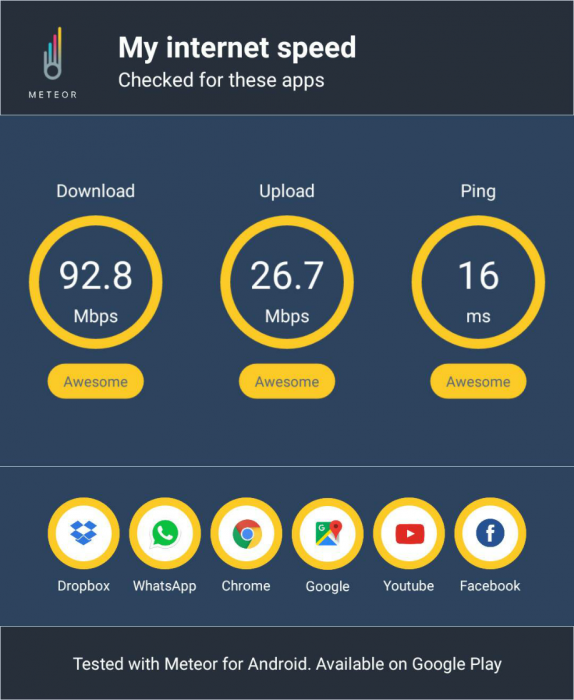
Neither phone features NFC, ostensibly because of the metal body. If you’re into tap-and-pay or sharing information via NFC, you’ll be out of luck with both of these phones.
So, should you buy the R9s or R9s Plus?
We’ve gone pretty hard on the phones on the software side, but the reality is that they’re affordable, high quality alternatives to the top-tier phones from the big manufacturers. Color OS simply isn’t to our tastes at all – It makes Oppo’s amazing hardware feel just the little bit more pedestrian and uninspired, and it made it a tough sell to stick with the phones for longer than the review period when our usual day-to-day phones feature a more Android-like UI. There’s an increasing number of Aussies out there buying Oppo’s phones though, and it makes us feel that our criticism of Color OS is perhaps a bit off-base for general consumers.
If you don’t have over $1000 to spend outright and can’t afford to spend a lot of money on a monthly plan, you’re going to value a quality camera, battery life and storage space over the iOS-like stylings of the hardware and software, mobile payments or whichever Android UI you might prefer. One of these phones is going to serve you well, regardless of your selection, and they both offer exceptional hardware for the price.
On the other hand if NFC tap-and-pay is a must-have capability or you just really really dislike Apple software and hardware designs, you’re probably going to want to look elsewhere.
The phones are both available at retail from JB Hi-Fi and Officeworks at $600 for the R9s and $700 for the R9s Plus. Woolworths Mobile has them on plans from $50-$75/month. If you look around a little more you might find some online retailers offering some bonus inclusions at the standard retail price (eg, Mobileciti includes a 32GB microSD card).
Visit our partner WhistleOut to find out where you can buy the R9s Plus or R9s on a plan.
https://www.whistleout.com.au/Widgets/MobilePhoneSearch/Embed/1882747?n=10&t=true&h=false
https://www.whistleout.com.au/Widgets/MobilePhoneSearch/Embed/2504555?n=10&t=true&s=false&h=false
Disclosure Statement
OPPO has allowed Ausdroid to retain these as a long term review opportunity to keep track of OS updates and promised security patches.


























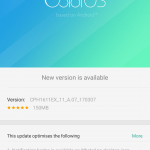

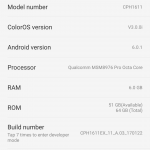


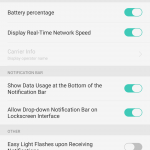



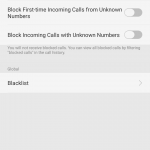

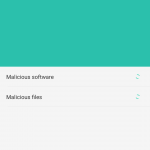



Fyi OPPO sent out an R9s Plus update a few days ago, taking the Android Security Patch level to 5 April 2017
I wish this review existed 3 weeks ago. Might have saved $600. Let’s just say mum got a new and got a pixel.
I was struck by the word “affordable” in the title of this post. Yes, I suppose everything is relative and if you compare Oppo phones to Samsung and Apple, they are affordable but they are significantly more expensive than Xiaomi phones.
I like Xiaomi, I imported one of their Mi Boxes to use with my TV.
But you can’t compare without pointing out that phones sold in Australia have an Australian warranty. In OPPO’s cases 2 years.
In comparison grey imports rely on you having to pay to ship your phone back to places like Hong Kong, and hoping that the company that sold it to will fix it and return it.
Also grey imports will soon have GST added to the price from mid 2017
I notice Canon Camera Connect in one of your screen shots, I have an R7 at present, it wont talk to my Canon 40D or the entertainment system in my car. I’d be interested in knowing if the newer phones do a better job of it.
So far Canon camera connect has worked fine with the oppo r9s Plus
Haven’t tested the oppo with a car because I don’t own one
I had an R9S of for a few months and I think subjectively they are amazing for what they cost
I have a LG G6 now and I often look at it and think is it twice as good as the OPPO as it cost twice as much and the answer would be NO.
The OPPO is quite simplify all the phone that most people will ever need in terms of performance, memory, build quality and even the IOS is function
Hope your LG G6 is more stable than our first review unit!
Its flawless so far and the DAC is absolutely stunning driving my OPPO PM-3’s.